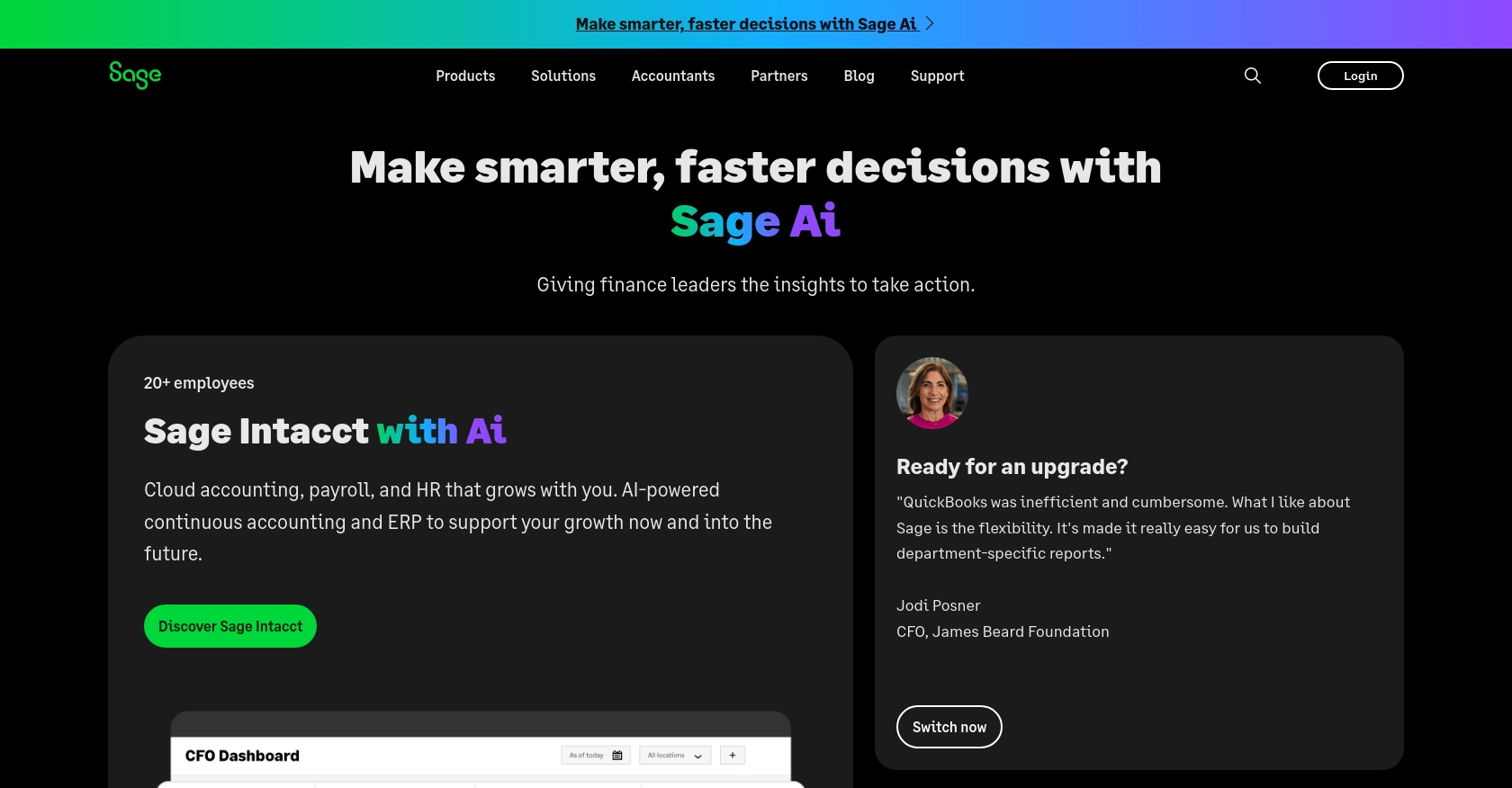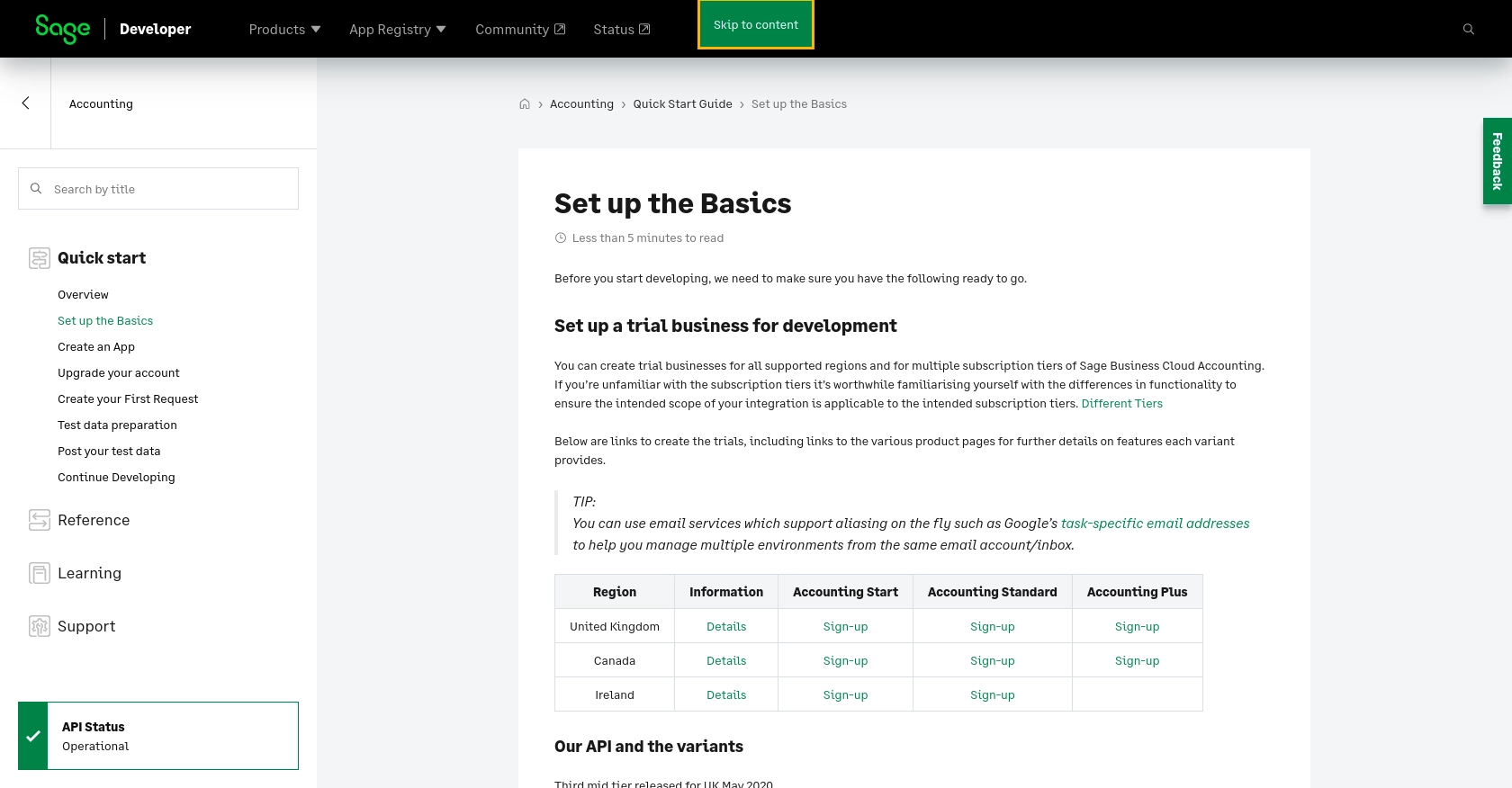Using the Sage Accounting API to Get Acounts (with PHP examples)

Introduction to Sage Accounting API
Sage Accounting is a robust cloud-based accounting software designed to simplify financial management for small to medium-sized businesses. It offers a comprehensive suite of tools for managing invoices, expenses, cash flow, and more, making it a popular choice for businesses seeking efficiency and accuracy in their financial operations.
Integrating with the Sage Accounting API allows developers to automate and streamline accounting processes, such as retrieving account information. For example, a developer might use the Sage Accounting API to fetch ledger accounts and integrate them into a custom financial dashboard, providing real-time insights into a company's financial health.
Setting Up a Sage Accounting Test/Sandbox Account
Before you can start integrating with the Sage Accounting API, you'll need to set up a test or sandbox account. This allows you to safely experiment with the API without affecting any live data. Sage provides a trial business account specifically for development purposes.
Step-by-Step Guide to Create a Sage Developer Account
-
Sign Up for a Sage Developer Account:
Visit the Sage Developer Portal and sign up using your GitHub account or an email address. This account will allow you to register and manage your applications.
-
Create a Trial Business Account:
Navigate to the trial business creation page. Sage offers trial accounts for different regions and subscription tiers. Choose the one that best fits your development needs.
Creating a Sage App for OAuth Authentication
-
Log in to Your Sage Developer Account:
Once logged in, go to the application creation section.
-
Create a New App:
Click on "Create App" and fill in the required details such as the app name and callback URL. For more guidance, refer to the Sage App Creation Guide.
-
Obtain Client Credentials:
After saving your app, you'll receive a Client ID and Client Secret. These credentials are essential for OAuth-based authentication.
Upgrading to a Developer Account
To fully utilize the Sage Accounting API, upgrade your trial account to a developer account. This provides 12 months of free access for testing purposes. Submit the necessary details, including your app name and client ID, through the upgrade request form.
With your Sage Developer Account and app set up, you're now ready to start making API calls and integrating Sage Accounting into your applications.

sbb-itb-96038d7
Making API Calls to Retrieve Ledger Accounts Using Sage Accounting API with PHP
To interact with the Sage Accounting API and retrieve ledger accounts, you'll need to use PHP to make HTTP requests. This section will guide you through setting up your PHP environment, making the API call, and handling the response.
Setting Up Your PHP Environment for Sage Accounting API Integration
Before making API calls, ensure your PHP environment is correctly configured. You'll need PHP 7.4 or later and the cURL extension enabled to handle HTTP requests.
-
Install PHP and cURL:
Ensure PHP is installed on your system. You can verify this by running
php -vin your terminal. If not installed, download it from the official PHP website. Ensure the cURL extension is enabled in yourphp.inifile. -
Set Up a Project Directory:
Create a directory for your project and navigate to it using your terminal or command prompt.
Example PHP Code to Fetch Ledger Accounts from Sage Accounting API
Now that your environment is set up, you can write the PHP code to make the API call. The following example demonstrates how to retrieve ledger accounts using the Sage Accounting API.
<?php
// Define the API endpoint and your credentials
$endpoint = "https://api.sage.com/accounting/ledger-accounts";
$clientId = "Your_Client_ID";
$clientSecret = "Your_Client_Secret";
// Obtain an access token using OAuth
$tokenUrl = "https://oauth.sage.com/token";
$auth = base64_encode("$clientId:$clientSecret");
$ch = curl_init($tokenUrl);
curl_setopt($ch, CURLOPT_RETURNTRANSFER, true);
curl_setopt($ch, CURLOPT_HTTPHEADER, [
"Authorization: Basic $auth",
"Content-Type: application/x-www-form-urlencoded"
]);
curl_setopt($ch, CURLOPT_POSTFIELDS, "grant_type=client_credentials");
$response = curl_exec($ch);
curl_close($ch);
$tokenData = json_decode($response, true);
$accessToken = $tokenData['access_token'];
// Make the API call to get ledger accounts
$ch = curl_init($endpoint);
curl_setopt($ch, CURLOPT_RETURNTRANSFER, true);
curl_setopt($ch, CURLOPT_HTTPHEADER, [
"Authorization: Bearer $accessToken",
"Accept: application/json"
]);
$response = curl_exec($ch);
curl_close($ch);
$ledgerAccounts = json_decode($response, true);
// Display the ledger accounts
foreach ($ledgerAccounts['data'] as $account) {
echo "Account Name: " . $account['name'] . "<br>";
echo "Account Type: " . $account['type'] . "<br><br>";
}
?>
Verifying API Call Success and Handling Errors
After executing the PHP script, you should see a list of ledger accounts printed on your screen. If the API call fails, ensure you handle errors gracefully by checking the HTTP response status code and error messages.
<?php
// Check for errors
if (curl_errno($ch)) {
echo 'Request Error:' . curl_error($ch);
} else {
$httpCode = curl_getinfo($ch, CURLINFO_HTTP_CODE);
if ($httpCode !== 200) {
echo "Failed to retrieve ledger accounts. HTTP Status Code: $httpCode";
}
}
?>
For more detailed error handling, refer to the Sage Accounting API documentation.

Conclusion and Best Practices for Using Sage Accounting API with PHP
Integrating with the Sage Accounting API using PHP allows developers to automate financial processes and gain real-time insights into business accounts. By following the steps outlined in this guide, you can efficiently retrieve ledger accounts and incorporate them into your applications.
Best Practices for Secure and Efficient API Integration
- Securely Store Credentials: Always store your Client ID and Client Secret securely. Avoid hardcoding them in your source code. Use environment variables or secure vaults to manage sensitive information.
- Handle Rate Limiting: Be mindful of the API rate limits to avoid service disruptions. Implement exponential backoff strategies to handle rate limit errors gracefully. Refer to the Sage Accounting API documentation for specific rate limit details.
- Implement Error Handling: Ensure robust error handling by checking HTTP status codes and error messages. This will help you diagnose issues quickly and maintain a smooth user experience.
- Data Standardization: Standardize and transform data fields as needed to ensure compatibility with your application’s data structures.
Streamlining Integration with Endgrate
For developers looking to simplify integration processes across multiple platforms, consider using Endgrate. Endgrate offers a unified API endpoint that connects to various services, including Sage Accounting, allowing you to focus on your core product while outsourcing integration complexities.
By leveraging Endgrate, you can build once for each use case instead of multiple times for different integrations, saving time and resources. Explore the benefits of an intuitive integration experience by visiting Endgrate today.
Read More
- https://endgrate.com/provider/sage
- https://developer.sage.com/accounting/quick-start/set-up-the-basics/
- https://developer.sage.com/accounting/quick-start/create-an-app/
- https://developer.sage.com/accounting/quick-start/upgrade-your-account/
- https://developer.sage.com/accounting/reference/accounting-setup/#tag/Ledger-Accounts/operation/getLedgerAccounts
Ready to get started?
